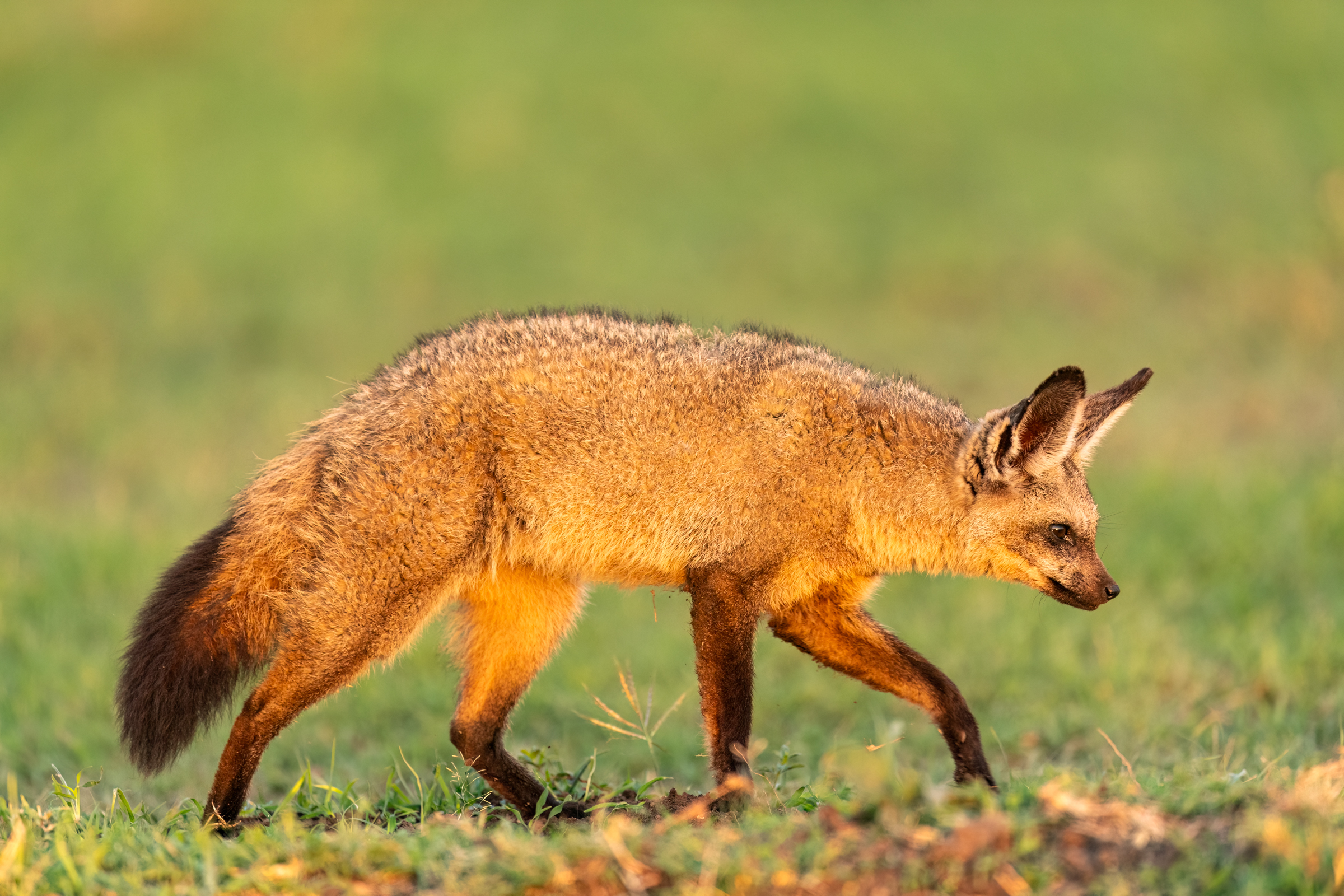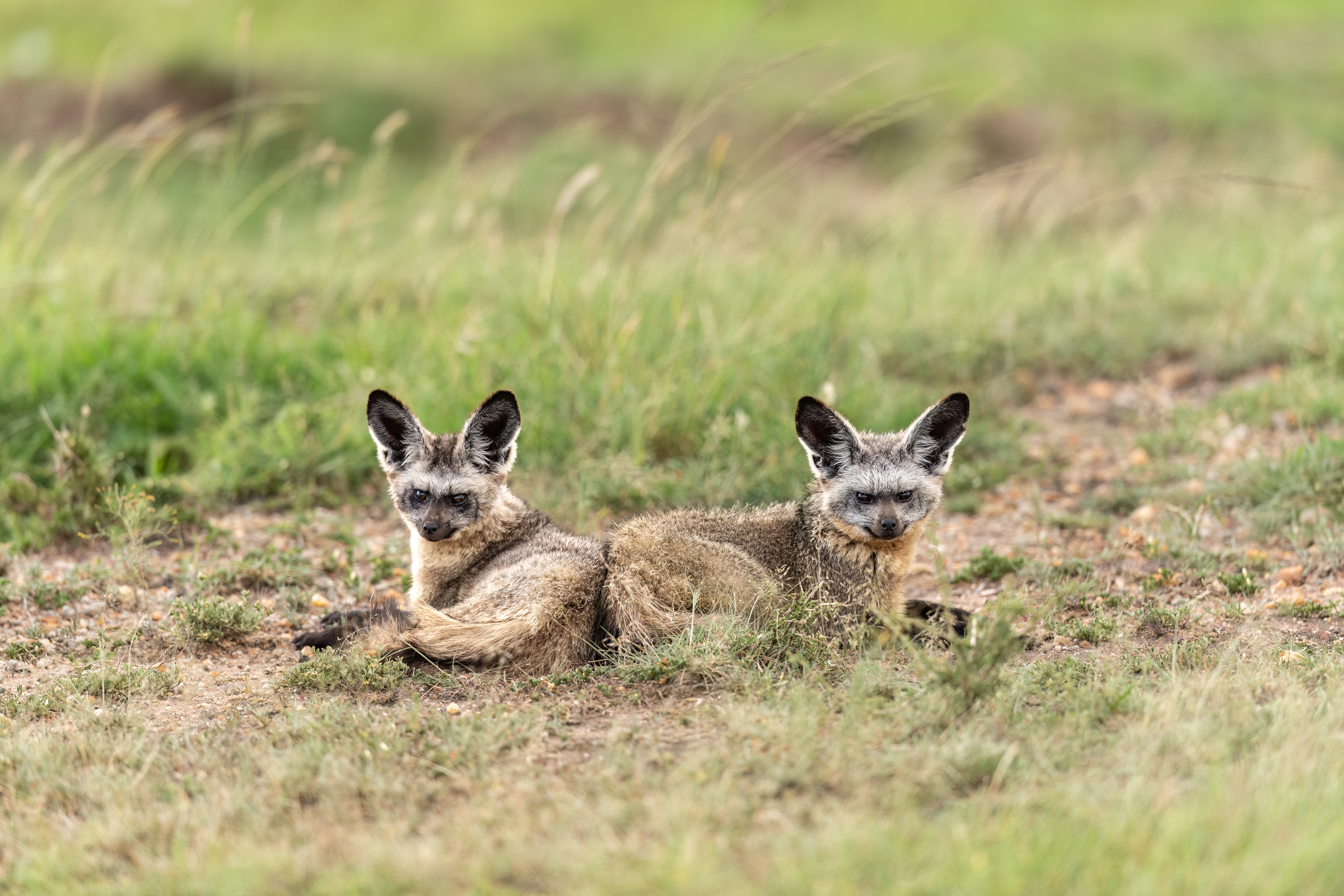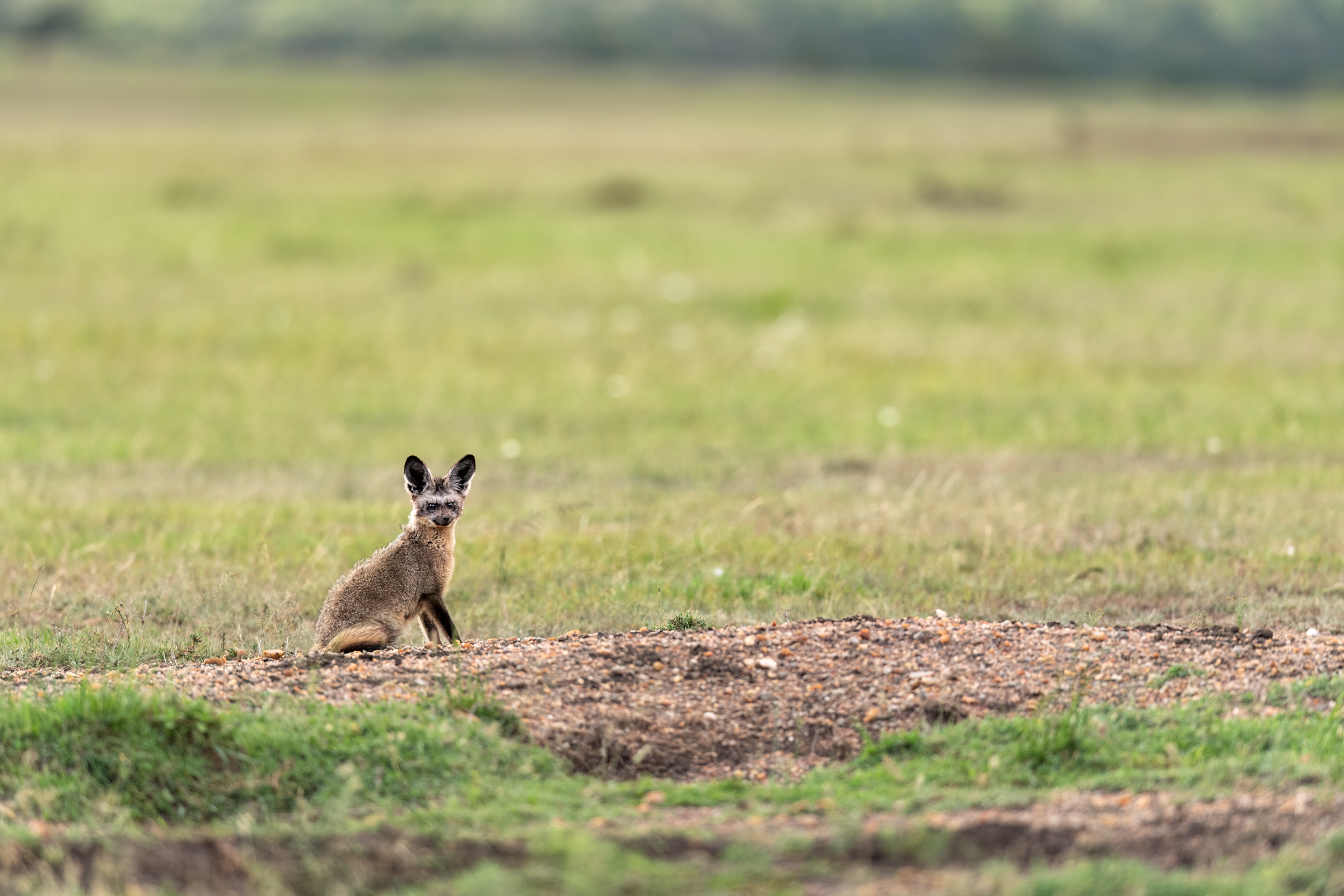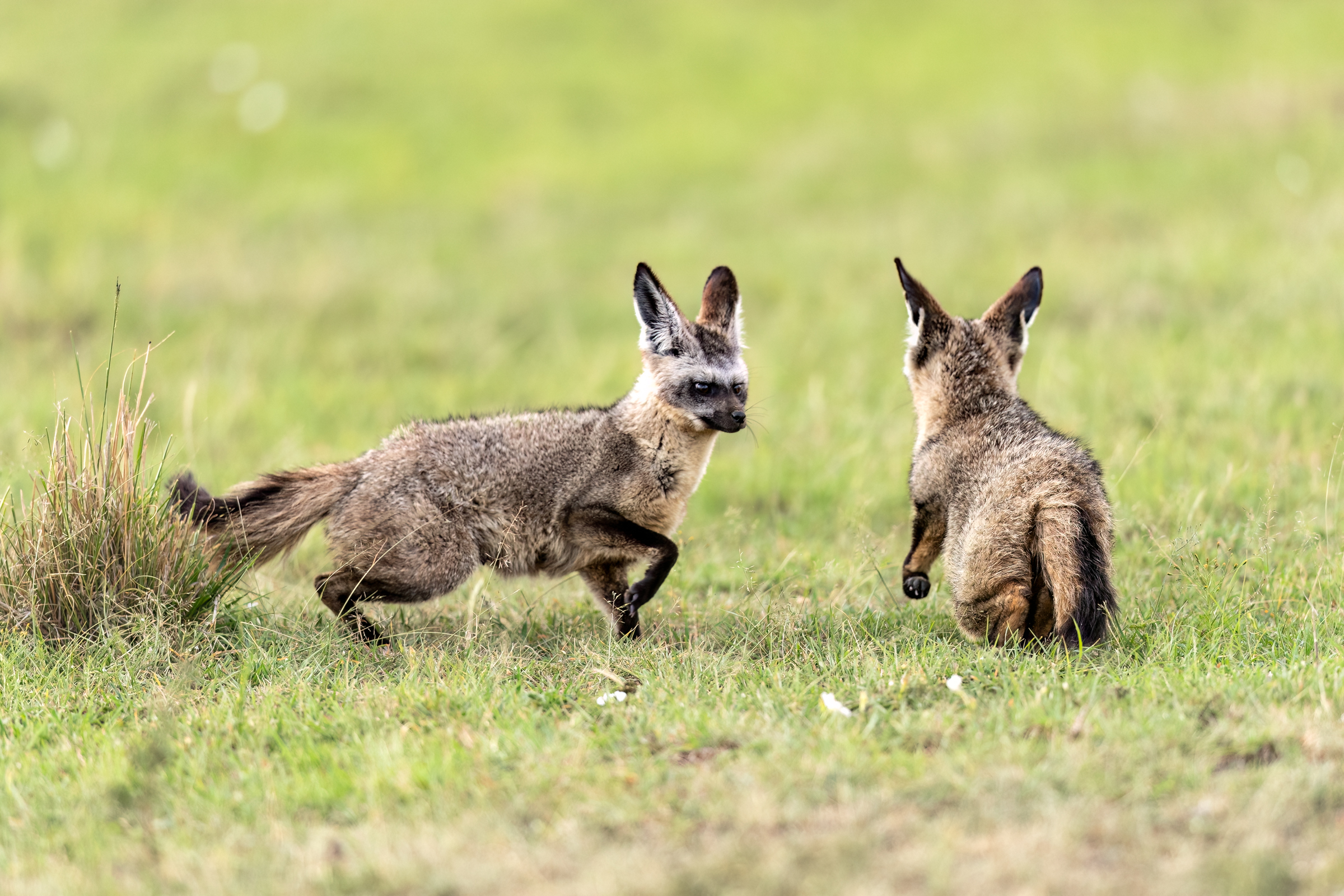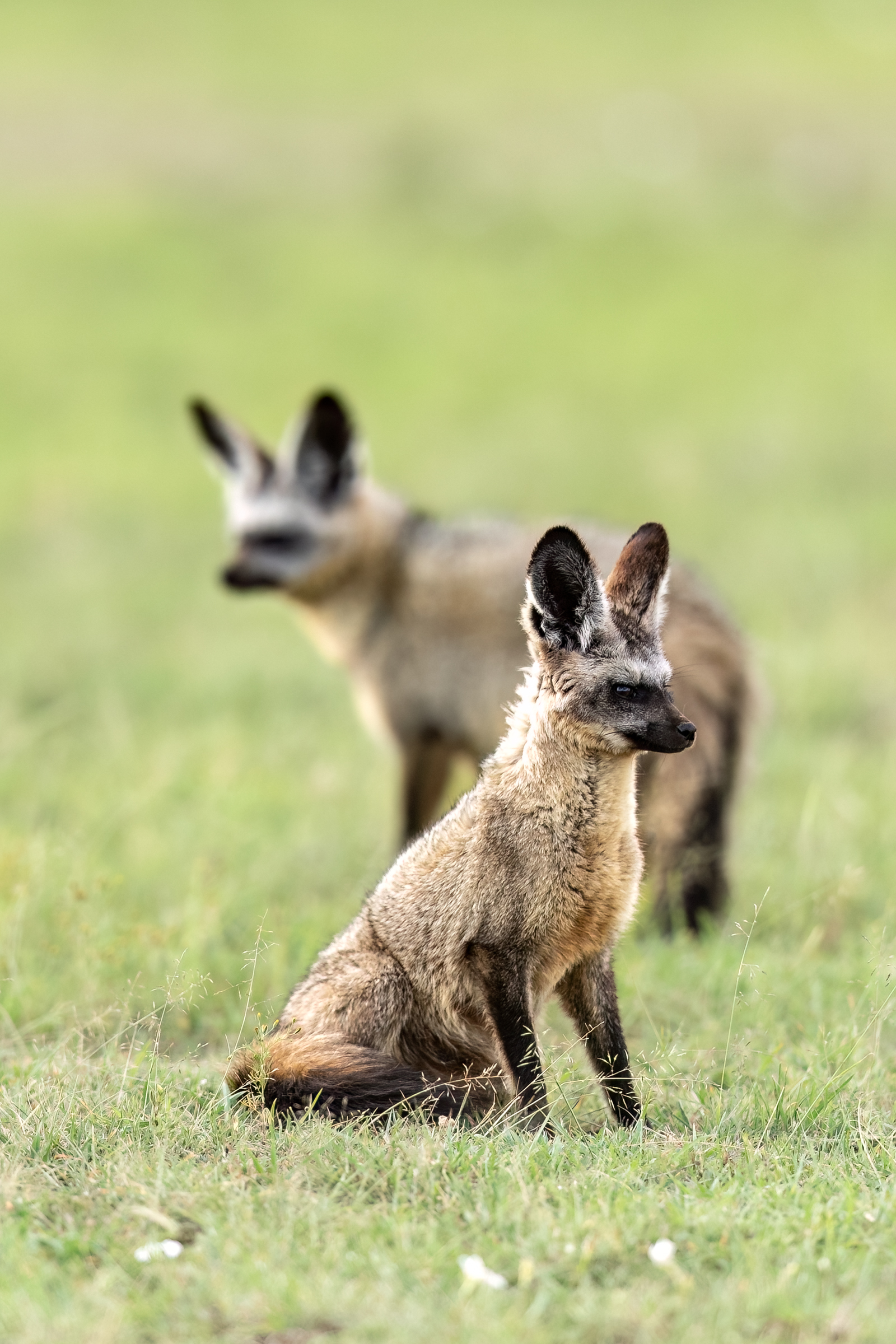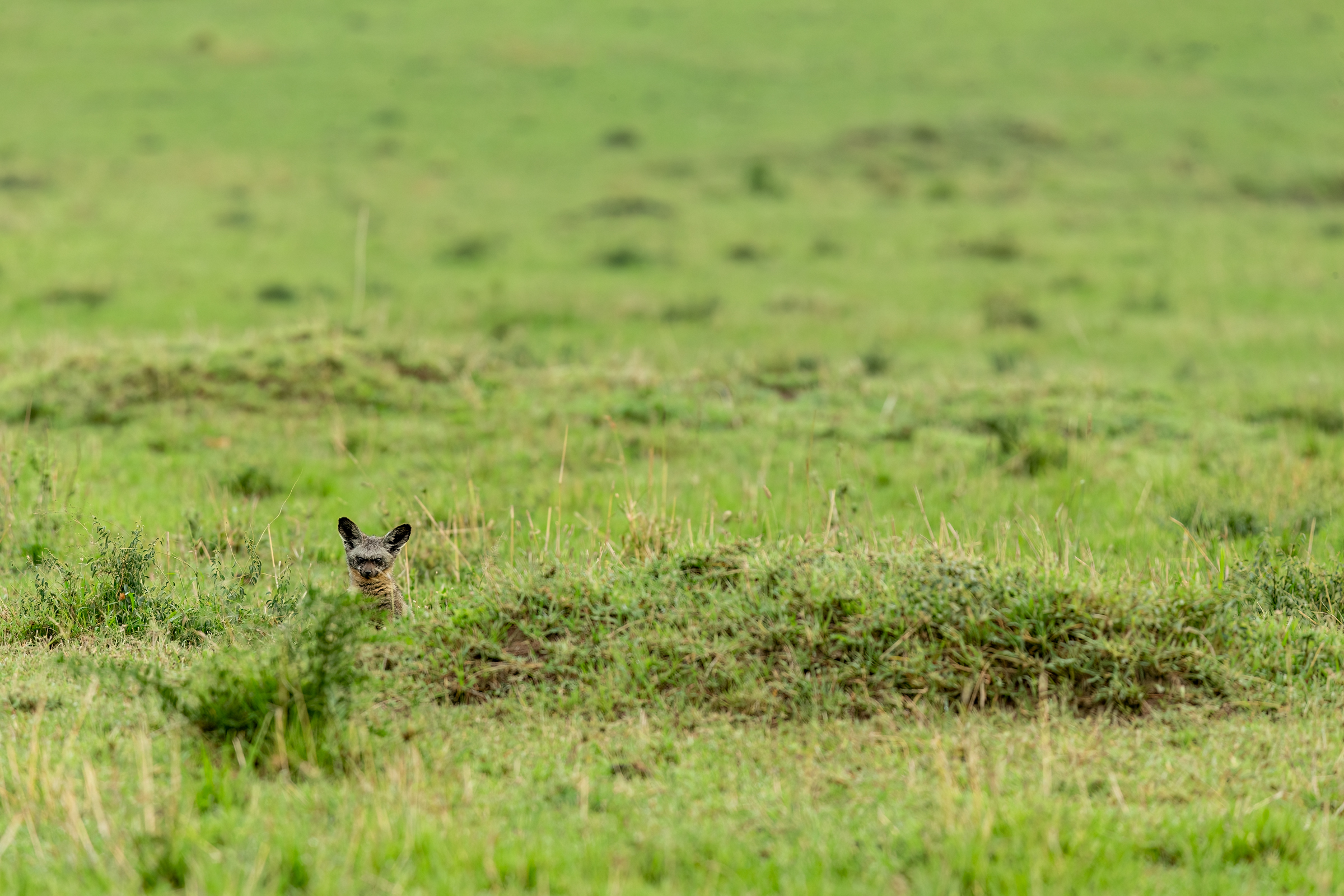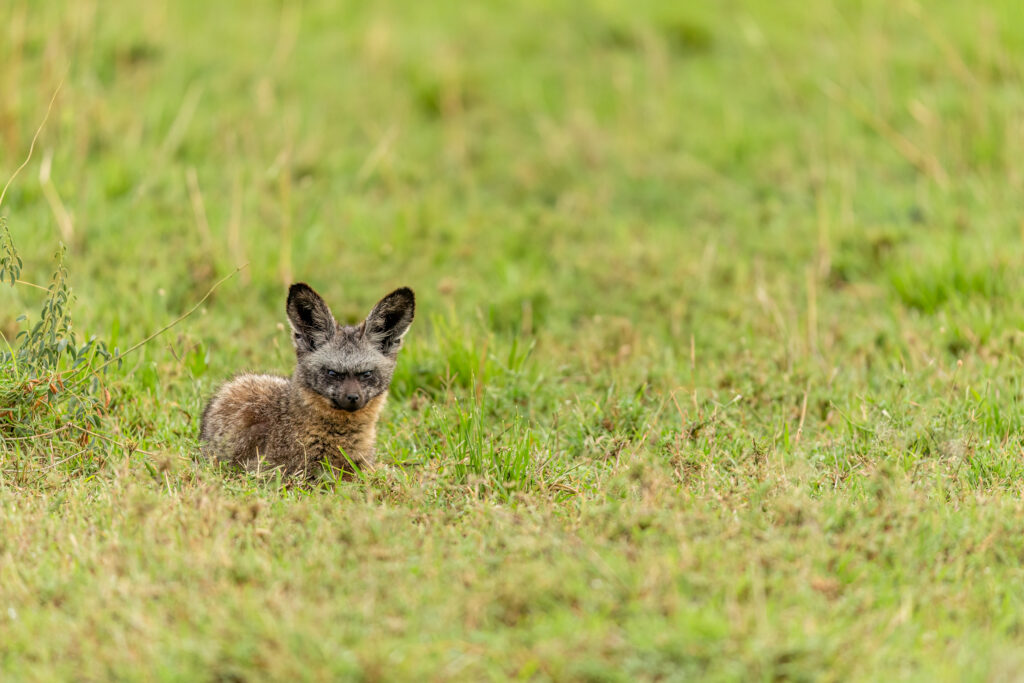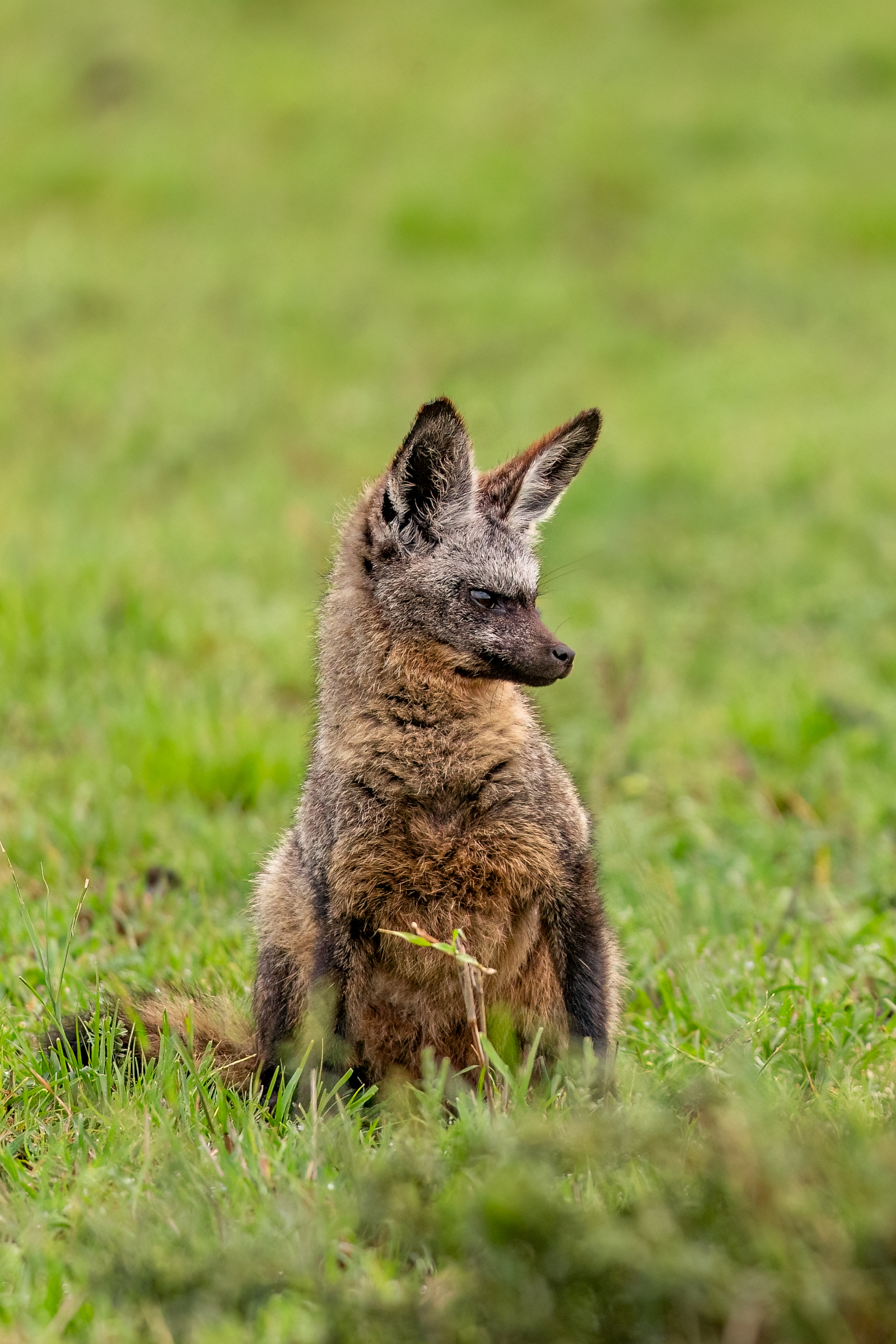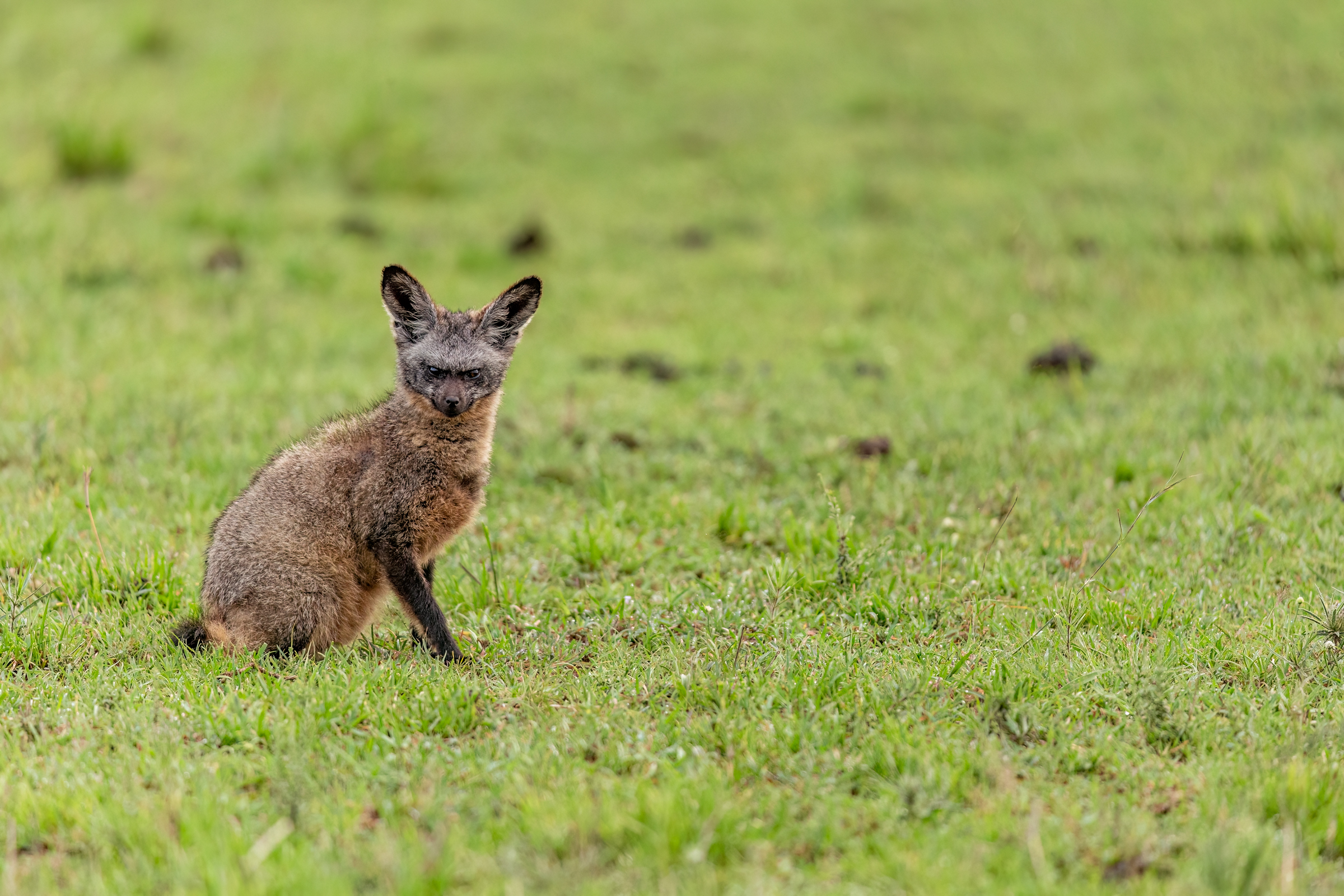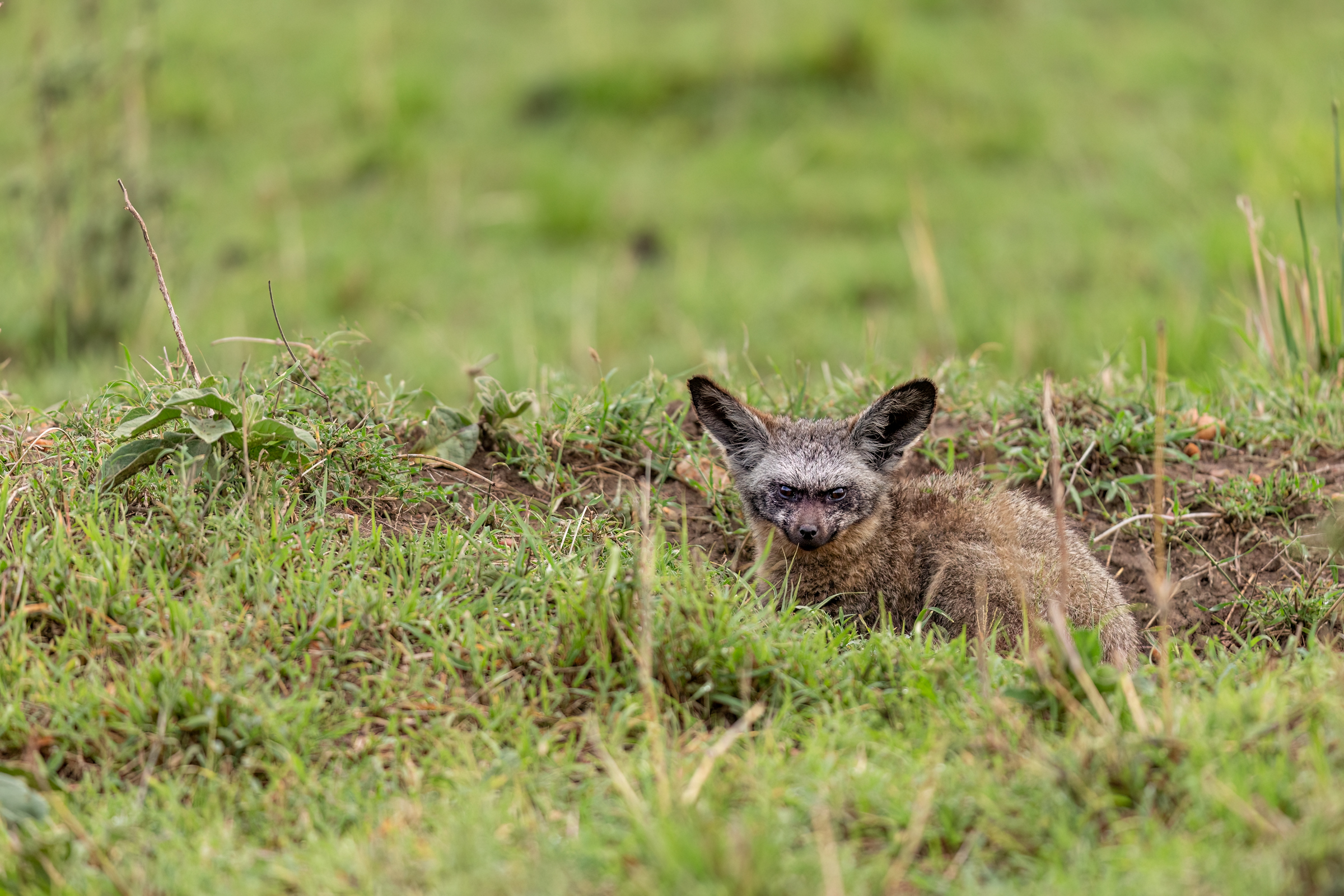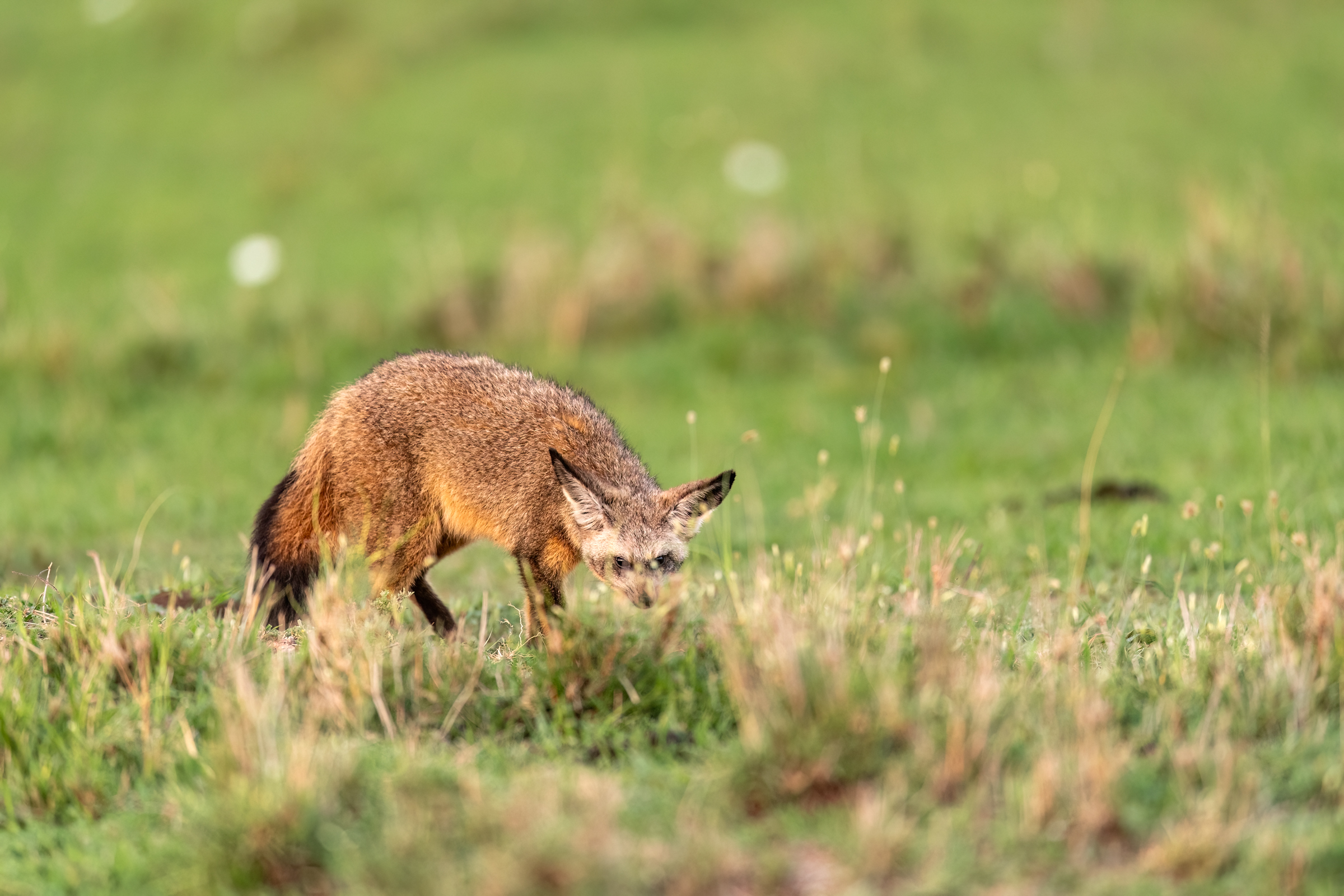
Prediction is important in wildlife photography. You need an understanding of the animal’s ecology and behaviour to know where and what the animal is going to do next, so you can position yourself and the light for capturing a beautiful and insightful image that tells a story. No point driving up and scaring the animal off and ending up with a “butt-shot”, or positioning yourself on the wrong side of a tree when waiting for a leopard to descend. I am not bad at predicting where we can see a species and predicting their movements although, when it comes to the Bat-eared Fox (Otocyon megalotis), I seem to fail every time. Classic statements that lead me to failure are: “We saw them here with cubs yesterday so we should be able to find them again” or “they favour this termite rich habitat so they should be hunting here somewhere”. I have ultimately come to the point of view that you just can’t make predictions about Bat-eared foxes, they are elusive and special, and you should be thankful for every opportunity you get.
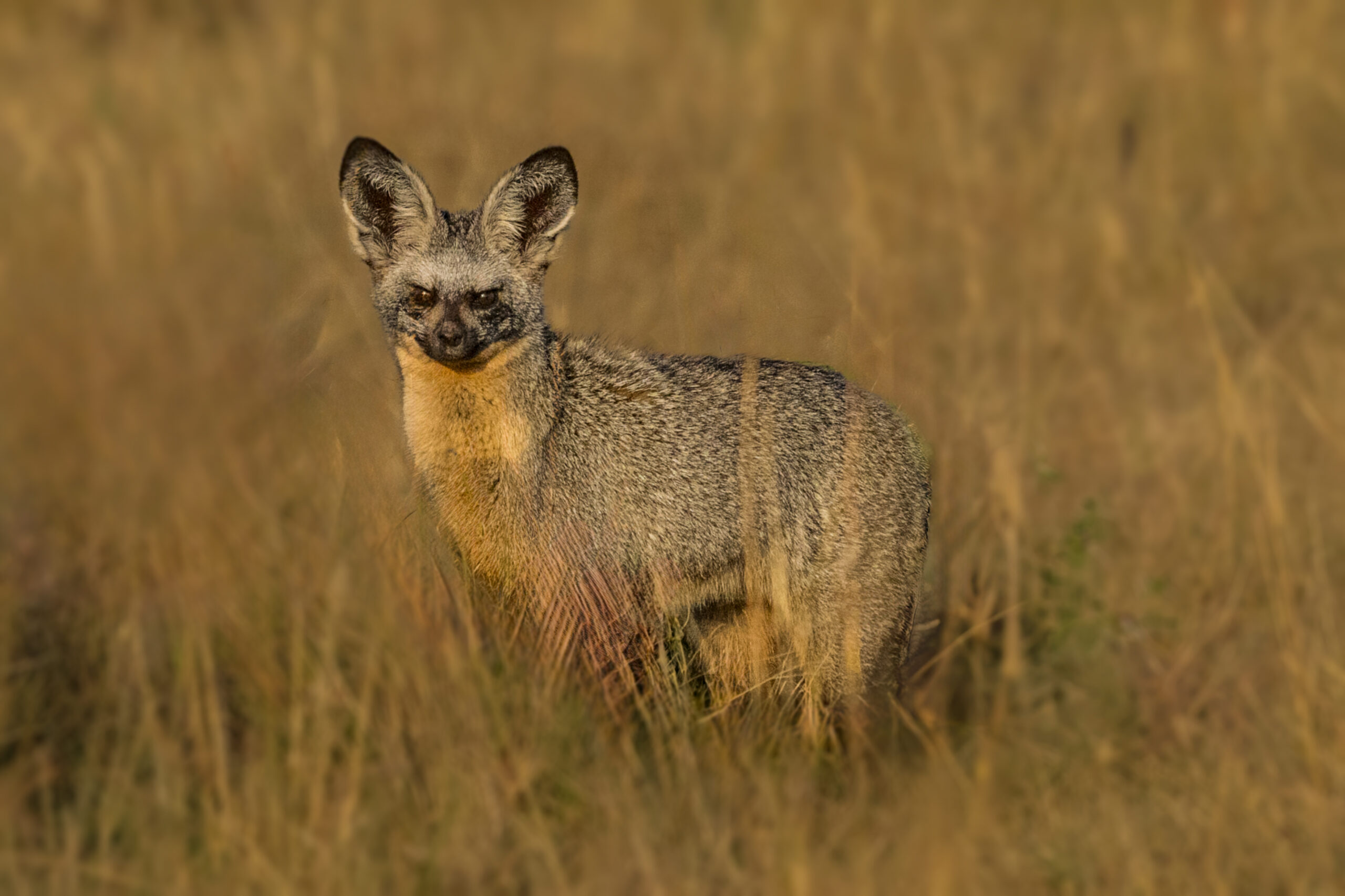
These miniature members of the dog family are so special and different that it is worth having a quick look at how they differ from all the other canids like jackals, foxes and wolves. Here are five features that make them distinct and special members of the dog family and good aspects of the biology for you to think about them when photographing.
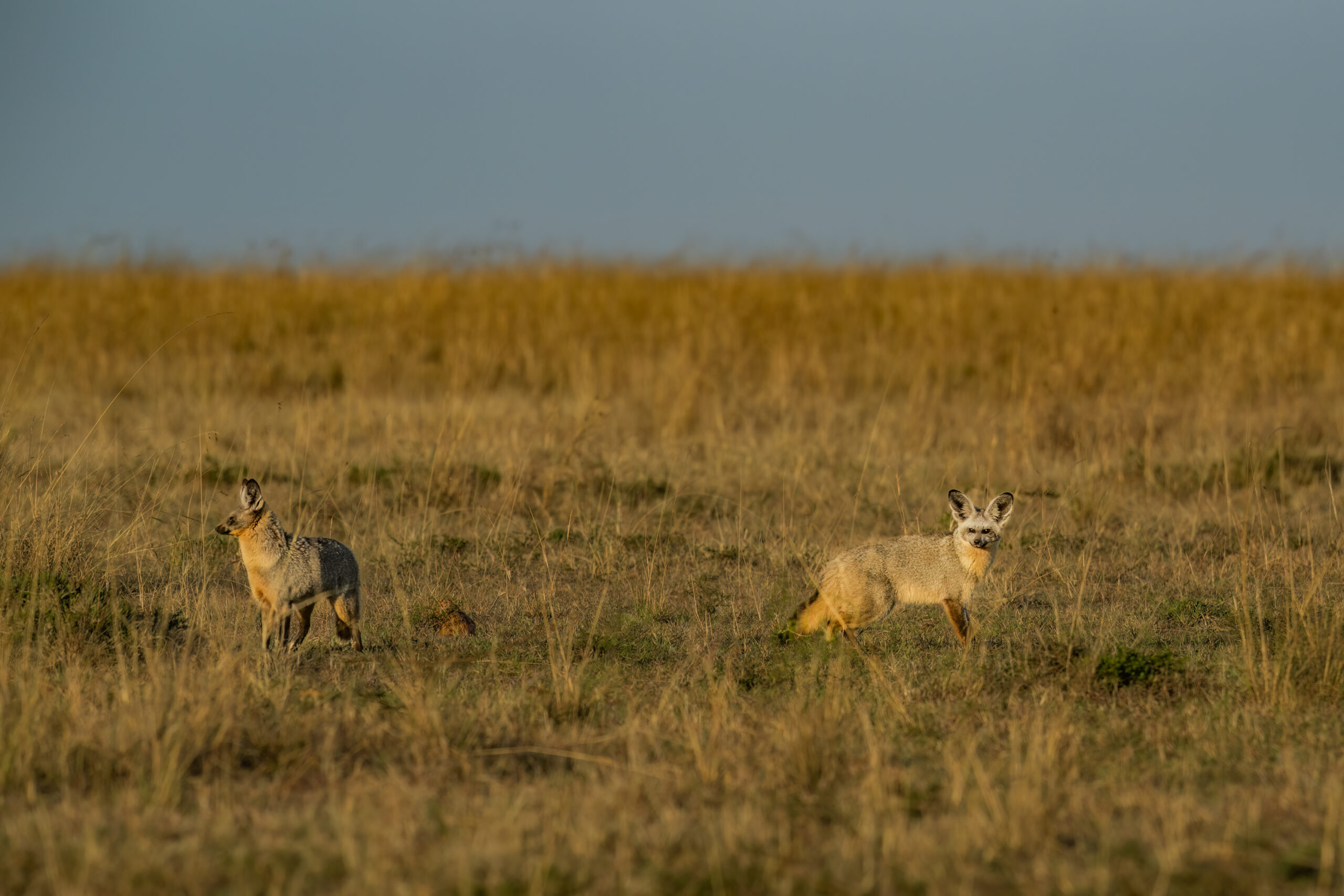
First, Bat-eared foxes have a remarkable number of teeth, more teeth than any other member of the dog (canid) family and indeed more than any other placental mammal, only the marsupials have more. Most of the members of the dog family have 42 teeth but the Bat-eared fox has a total of up to 50 teeth with three upper and four lower molars on each side of the mouth, compared to the usual two upper and three lower molars in other canids. This is thought to be associated with their insectivorous diet and the fact they spend much time eating termites.
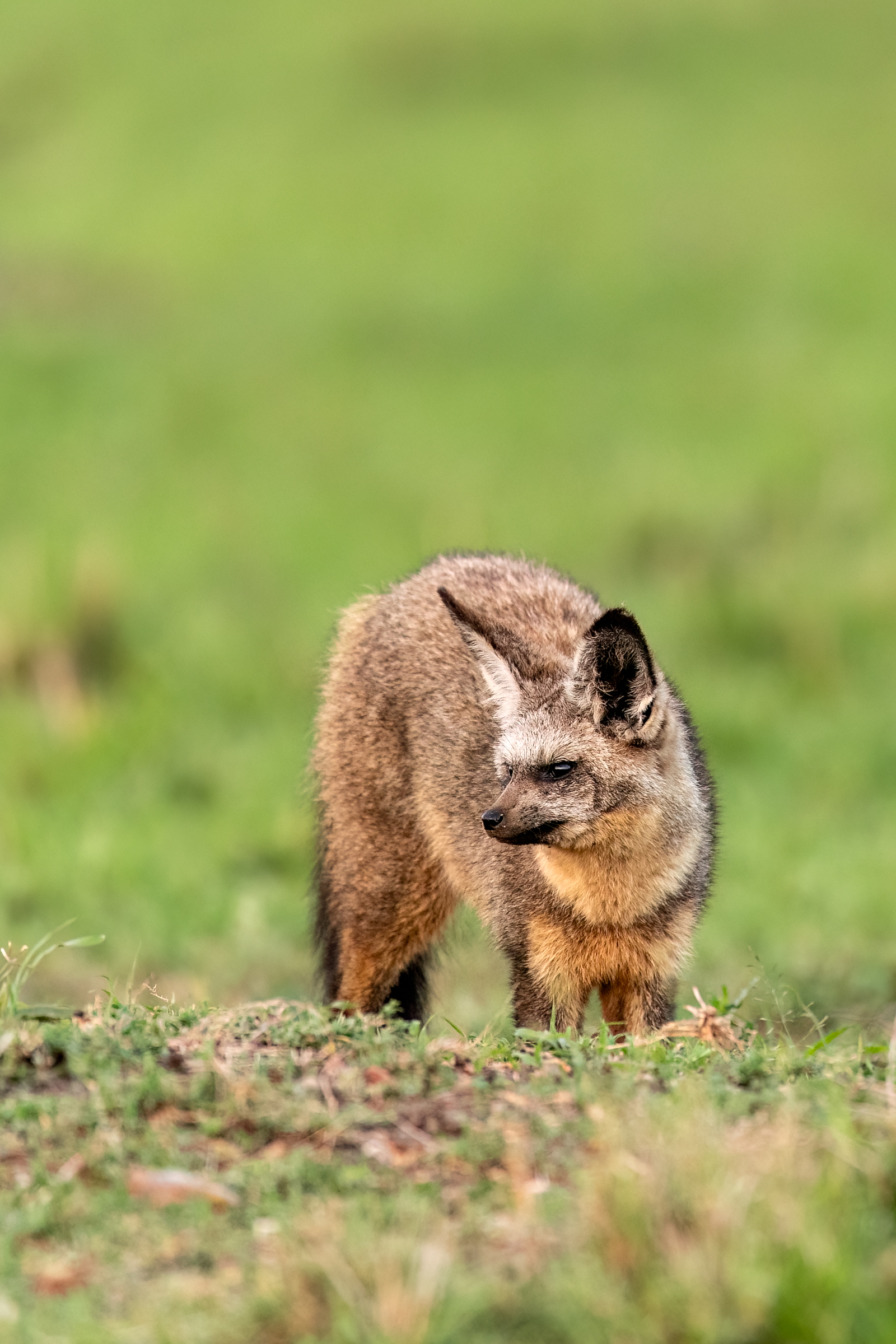
Second, they feed almost exclusively on insects and rarely drink water. Since their diet includes mostly termites and ants they get most, if not all their water, from consuming termites. Seeing a bat-eared fox drink would be exceptional.
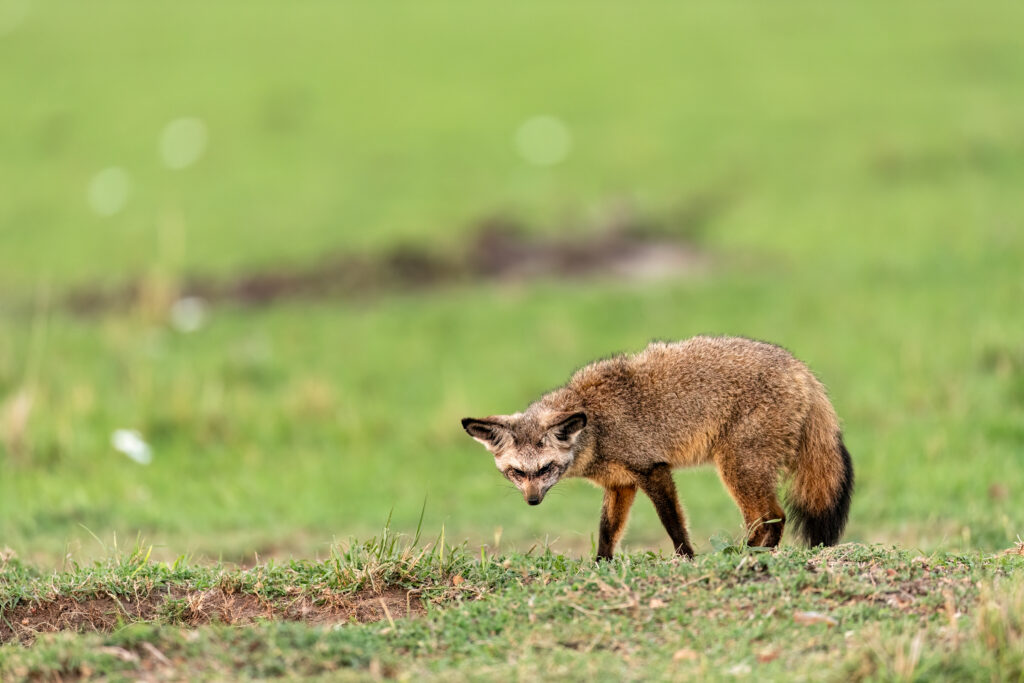
Third, while the foxes have exceptionally large ears that help them locate their insect prey, their ears are full of blood vessels and are used primarily for controlling their body temperature in the dry areas they inhabit. Not being tied to water bodies during the dry periods means they can reduce their chances of being caught by predators.
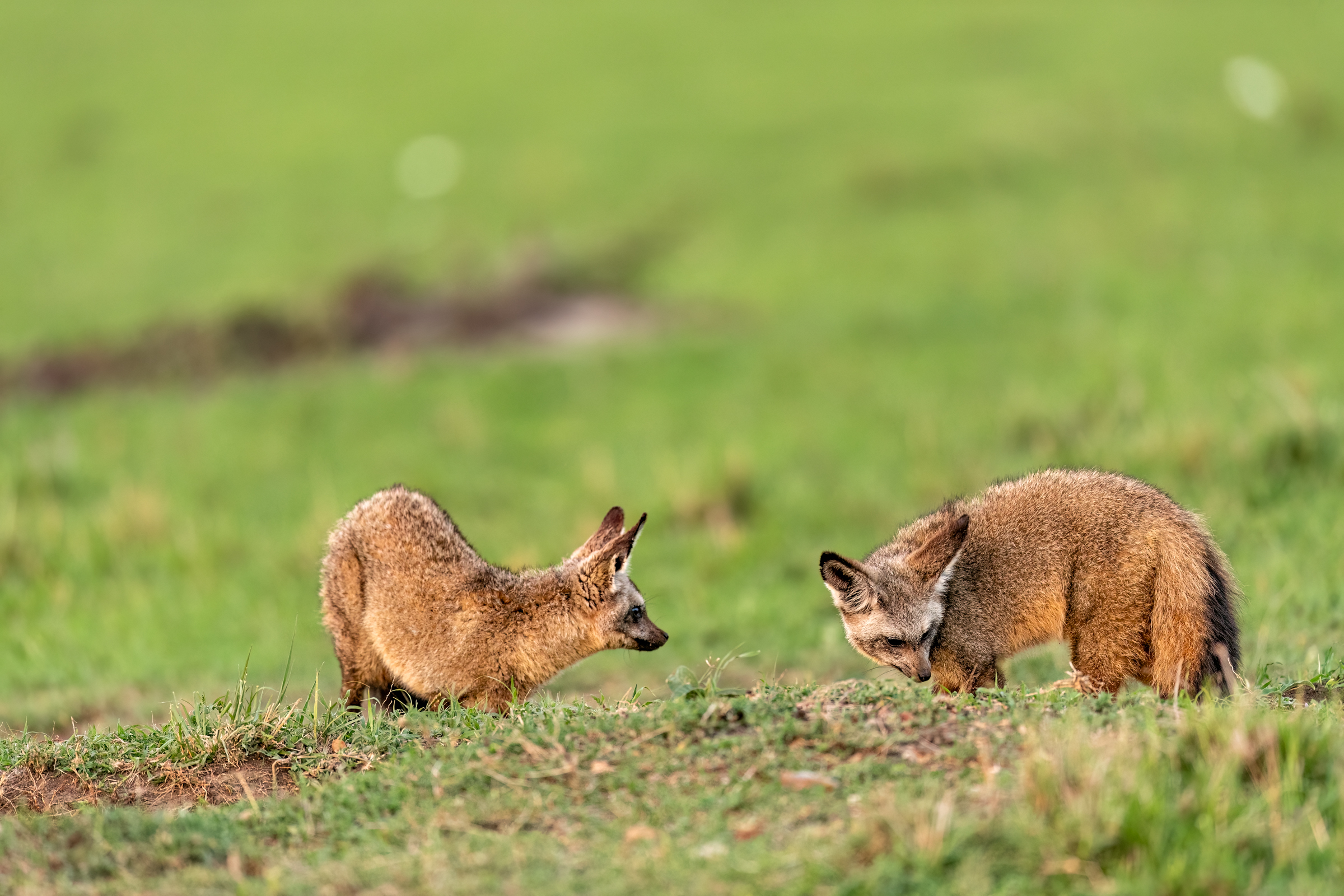
Fourth, unlike most canids the males do most of the parental care. They stay with the cubs most of the time, do the grooming and protect the pups while the females focus on foraging. I suspect this allows the females to recover after giving birth and balance their own survival against the provisioning of the pups. Unlike the other dogs, they rely more on visual communication as opposed to scent marking.
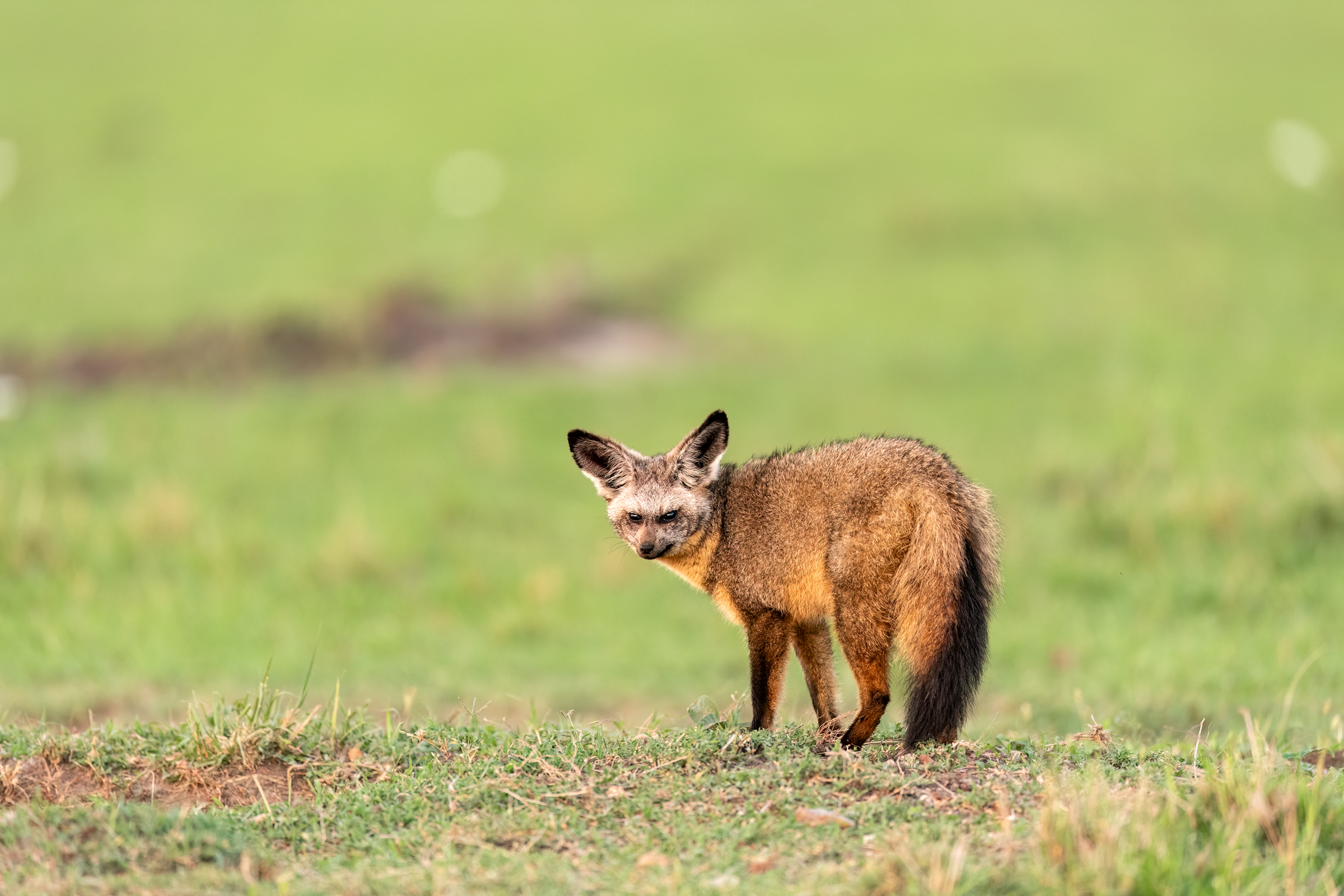
Fifth, while they do look like dogs, at first glance resemble the Fennec fox, being small with large ears, they are not closely related. The bat-eared fox is the only living species in this genus and is considered a basal species in that it evolved away from the other canid species about 4 million years ago (Figure 1). The Bat-eared fox is a really special member of the dog family, and contrasts with the Fennec fox, which is a true Vulpes. The real reason they look similar is through convergent evolution; they evolve to be similar since they have modes of life – eat insects and need to keep cool with big ears

Back in the 1980s a researcher called JR Malcolm1 spent eight months studying Bat-eared foxes that lived within a 35Km2 area south of the Talek River in the Masai Mara. The Olare Orok river that runs through the Mara Trails camp runs into the Talek river and is south of the camp, so this study was done in our part of the Mara. Malcolm found 6 different family groups of Bat-eared foxes living in this area, although it wasn’t always easy watching them and he had to focus primarily on their breeding dens. One of the issues is that these foxes do not become habituated to vehicles and people, so unless you are careful, they run away before you have even appreciated that they are there. They seem to prefer the short grass prairies in the months May-October and can be found foraging in areas where the large herds of Wildebeest and other ungulates have been grazing intensively. Take it from me, they are not easy to photograph when they are in the long grass. However, should you find them when they are foraging and you haven’t disturbed them, they will often spend up to an hour in an area foraging. They stalk through the grass listening for the movement of beetles or termites and you will see them move their heads to focus on the sound, then stick their nose into the base of the vegetation to grab the insect or do a pounce, coming up to 50cm off the ground before diving nose first to grab the insect. Sometimes, they will dig a hole to try and extract the prey, digging down 10cm and then crunching their prey. In the Mara, they focus primarily on ants, beetles and termites but will occasionally take bird eggs or carrion.
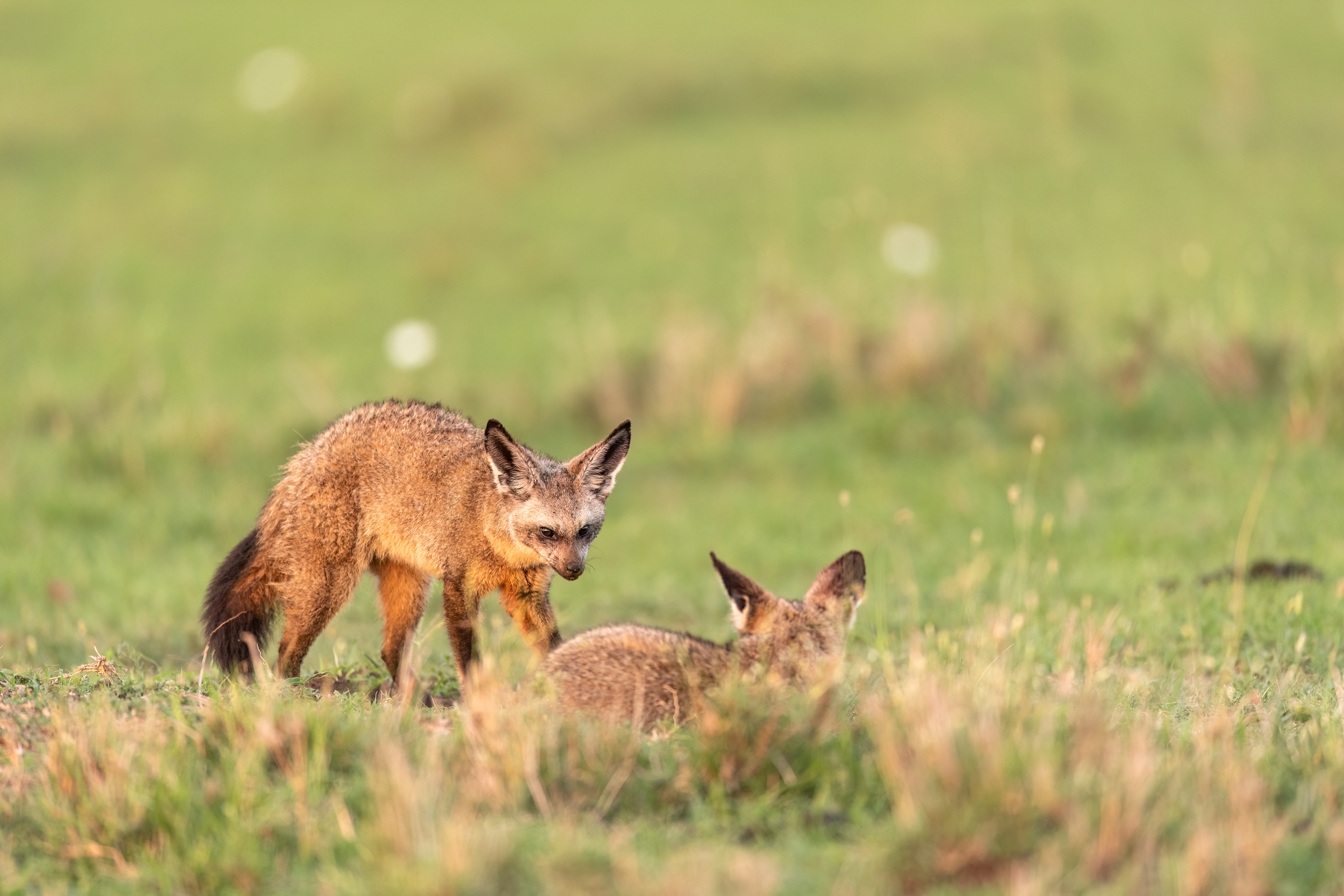
In the Mara, they live in groups of two to four adults, usually a male with one or more females and they do not defend exclusive territorial areas. Unlike the other canids, they do not defend exclusive territories, and their ranges overlap with their neighbours. They will let neighbours walk close by and they are often amicable playing with the pups of neighbours before moving back to their own den. Neighbours will often work together to keep jackals away from their den.
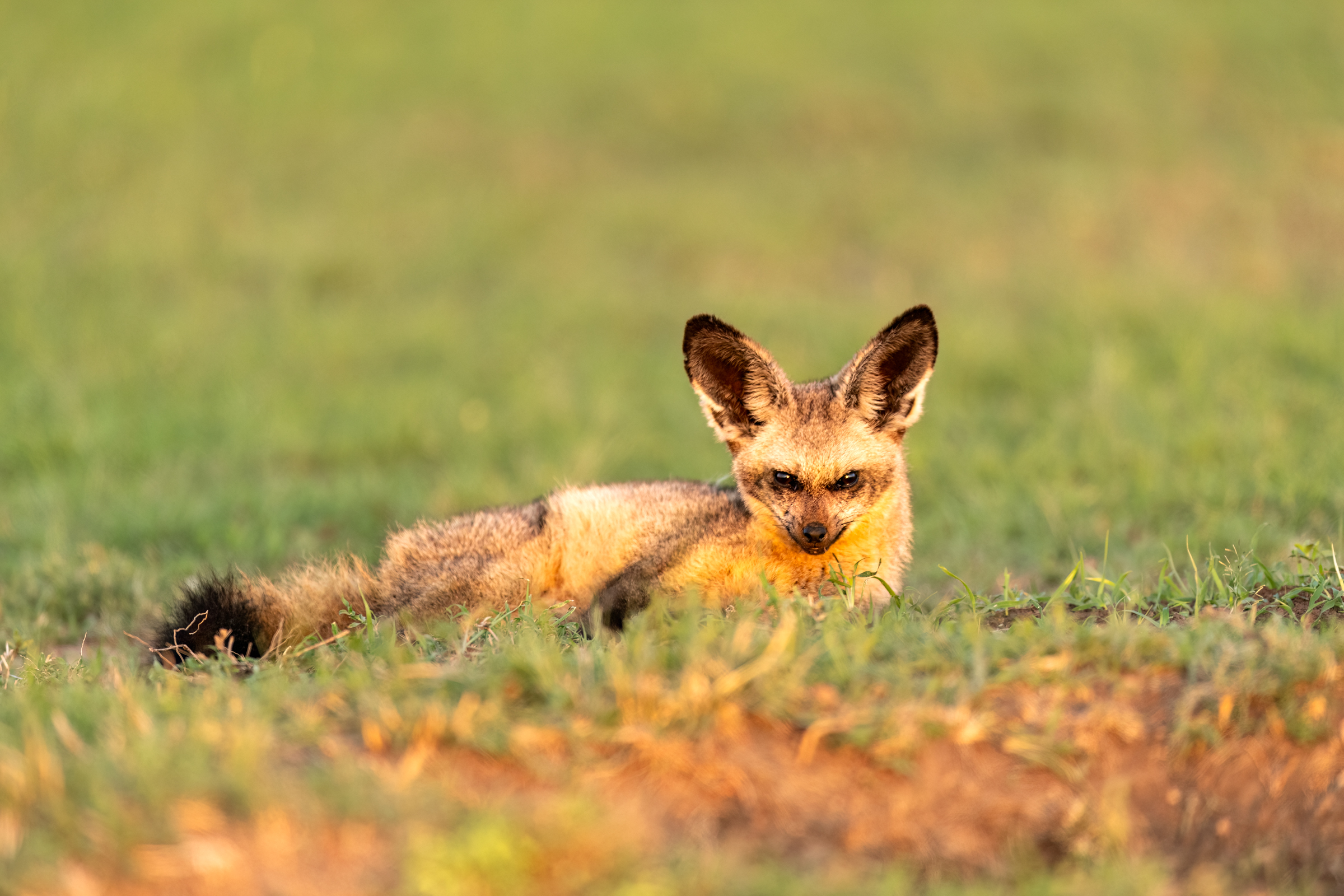
Unlike the other canids they do not appear to perform any scent marking but communicate with at least nine different vocalizations. Most of these are low pitched and are used when communicating within the group to keep in contact and include some whistling and a “who-who” call. The high-pitched yapping and barking sounds are used as alarm calls to warn others of a potential predator. They show strong visual displays and when approaching another fox will show appeasement by lowering their head and ears while the receiver acts more dominant. The tail is often arched as an “inverted U” during aggression.
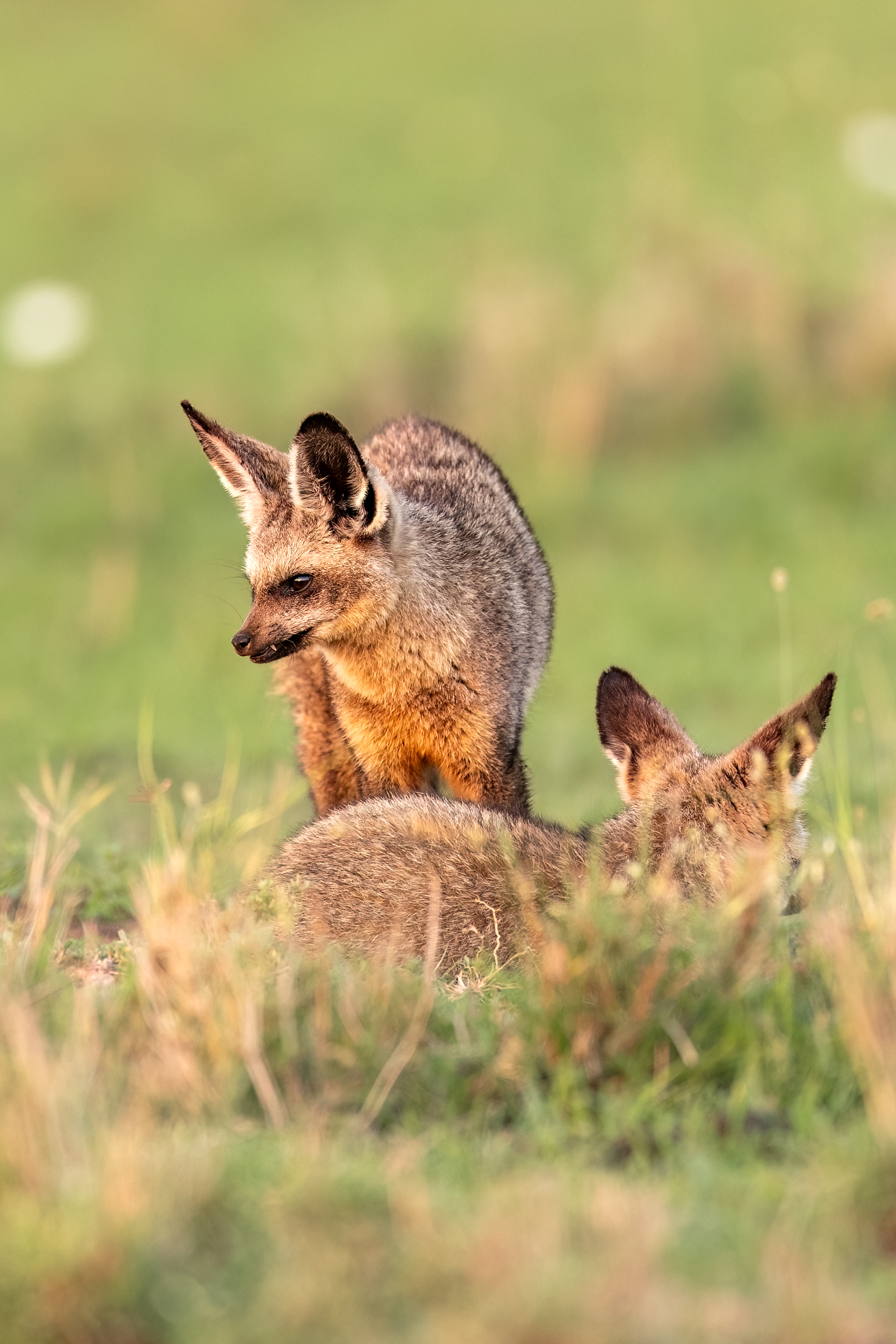
In the Mara they breed during September and October, and these are the best months to see them and be sure of finding them again. Outside the breeding season they seem to move dens often, hence the problem with tracking them. The dens are often close to each other and close to the short grass areas where they forage and this is where they spend most of their time during the day. Mostly they are monogamous but there can be two or more females with the male and at night, the male invariably stays behind to care for the cubs
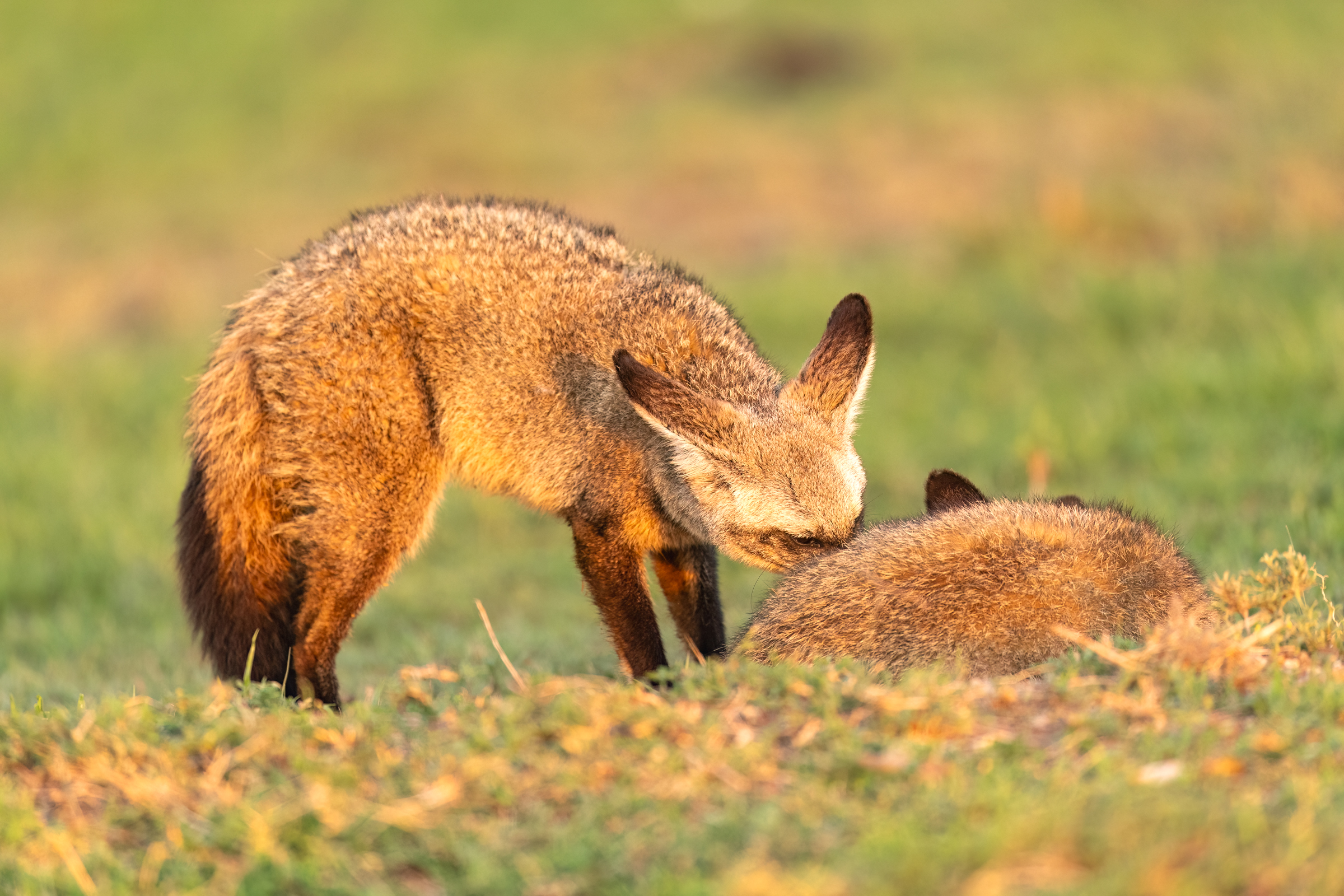
The Bat-eared fox is not considered a threatened species and is listed as a species of least concern, but I have concerns about the future of the African Savannah ecosystem. The foxes rely heavily on termites and the termites themselves are the hidden but critical engineers of this ecosystem that recycle vegetation into nutrients for future plant growth that in turn sustains the diverse herbivore fauna of the African savannah. Many of their species are threatened by desertification and the increasing drought issues in Africa. Habitat destruction including the change from pastoral land to agricultural land reduces the abundance of the good termites and encourages the pest species. Large areas of natural savannah and sustaining the termites, including their predatory Bat-eared foxes is essential.
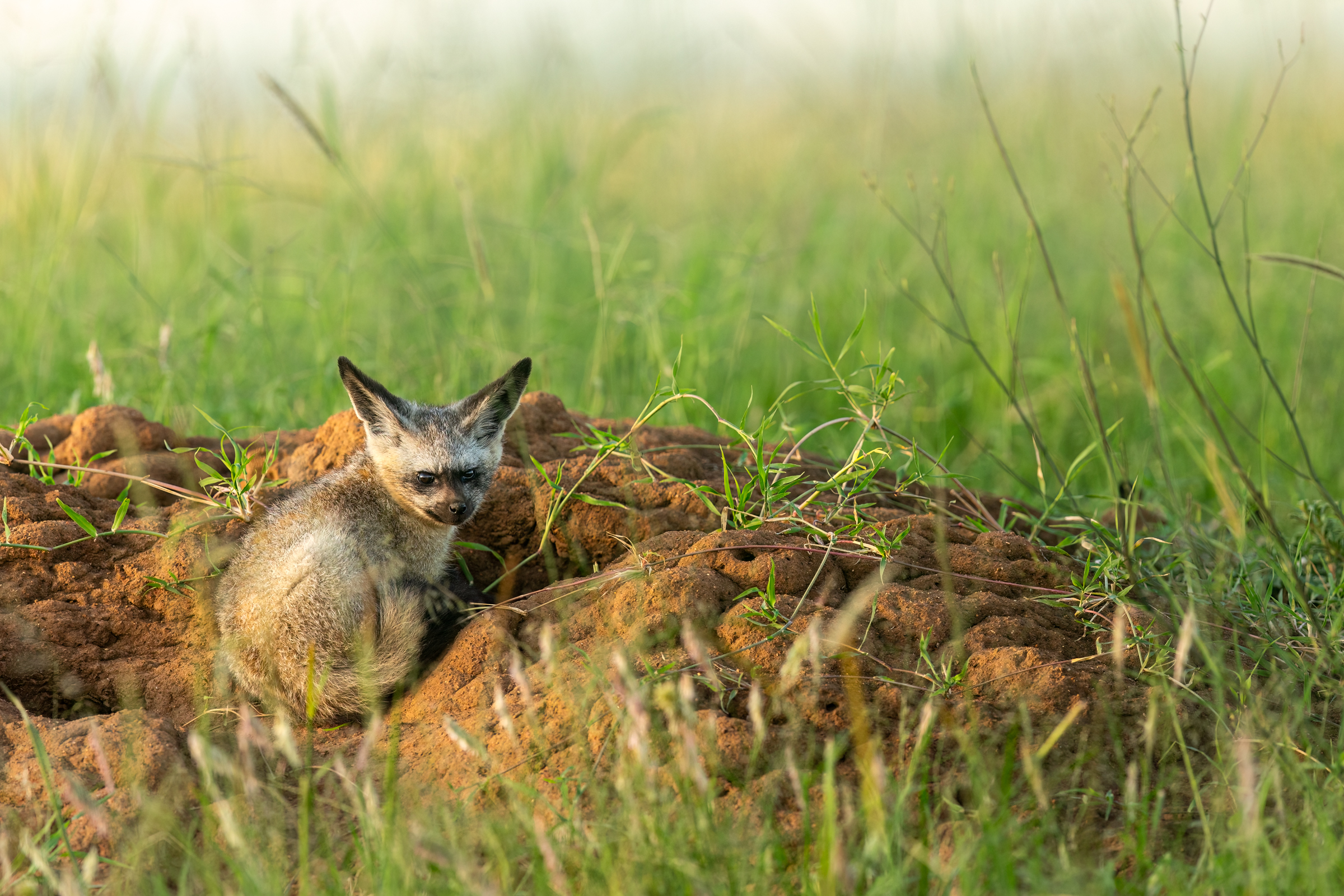
Footnote
Figure legend. This is the phylogeny of the species in the dog family (also known as canids) and the figure shows the evolutionary relationship between the species with the recent connections indicating more similarity. You will see that the Bat-eared fox evolved away from the other species many years ago, estimated at about 4 million years ago. They are close to the origin and are known as a “basal species”. Figure after Linblad-Toh et al 20051
